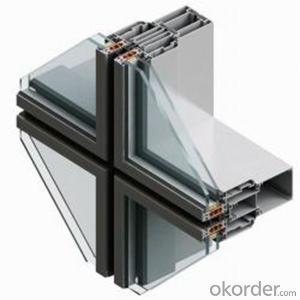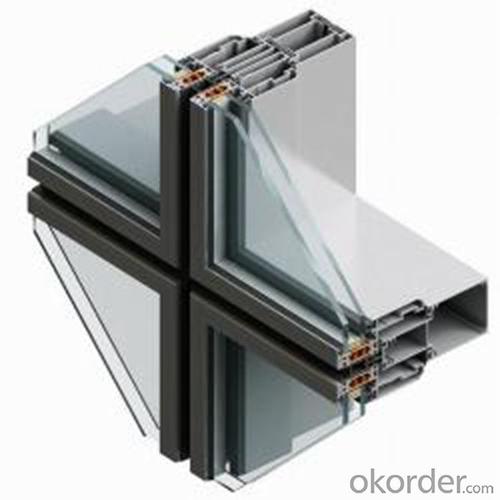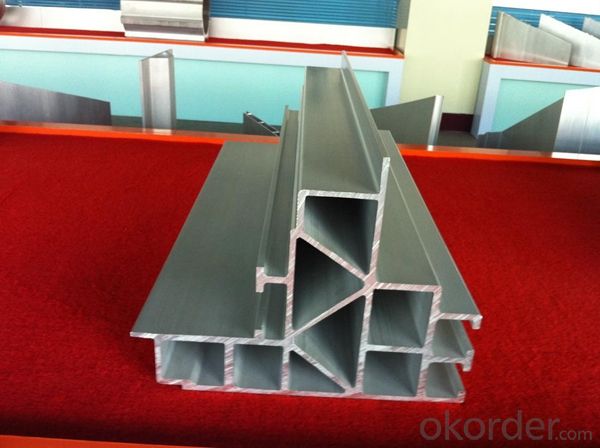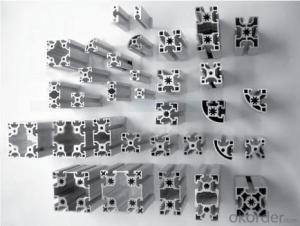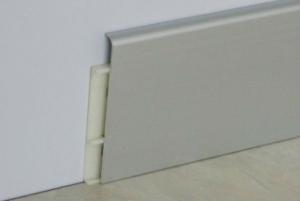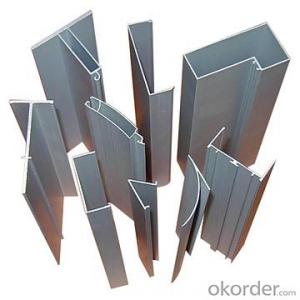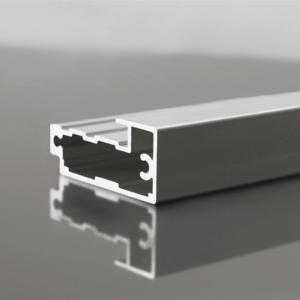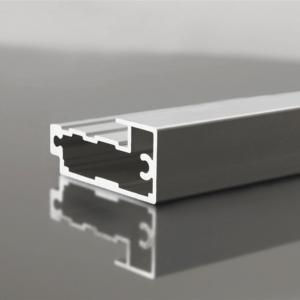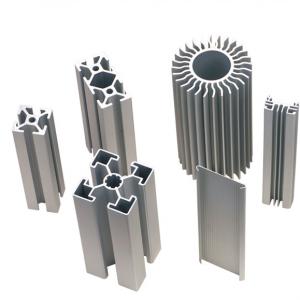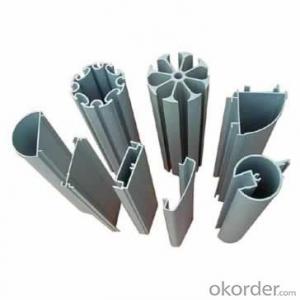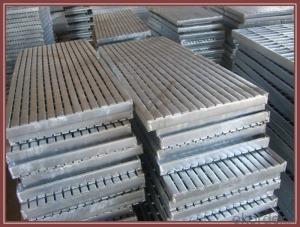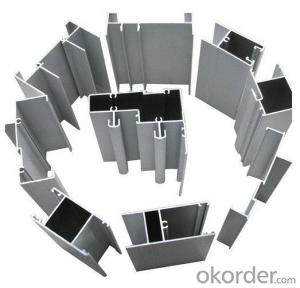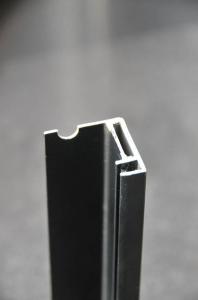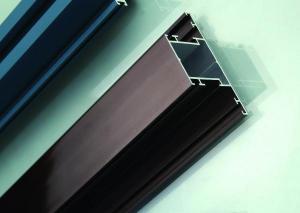Aluminum Profile Chinese Supplier Cheap 6063 T5 for Window
- Loading Port:
- Shanghai
- Payment Terms:
- TT OR LC
- Min Order Qty:
- 5 m.t.
- Supply Capability:
- 1000 m.t./month
OKorder Service Pledge
OKorder Financial Service
You Might Also Like
Specification
1. Specification of Aluminum Profile Chinese Supplier Cheap 6063 T5 for Window
Alloy | State | Tensile Strength δbMpa | Non-proportional Stretching Stress(δp0.2Mpa) | Stretching rate (δ%) | Pattern Thickness (mm) | HV | HW |
No Less Than | |||||||
6061 | T4/T6 | 180/265 | 110/245 | 16/8 | - | - | - |
6063 | T5/T6 | 160/205 | 110/180 | 8/8 | 0.8/- | 58/- | 8/- |
6063A | T5/T6 | 200,190/230,220 | 160,150/190,180 | 5,5/5,4 | 0.8,0.8/-,- | 65,65/-,- | 10,10/-,- |
2. Application of Aluminum Profile Chinese Supplier Cheap 6063 T5 for Window
wall cladding, ceilings, bathrooms, kitchens and balconies, shutters, doors,windows…
3. Feature of Aluminum Profile Chinese Supplier Cheap 6063 T5 for Window
Surface Quality :
Be free from Oil Stain, Dent, Inclusion, Scratches, Stain, Oxide Decoration, Breaks, Corrosion, Roll Marks, Dirt Streaks and other defect which will interfere with use,
Mochenical Property:
Chemical Composite and Mechanical Property
4. Certificate:
SGS and ROHS(if client request, paid by client), MTC(plant provided), Certificate of Origin(FORM A, FORM E, CO), Bureau Veritas and SGS (if client request, paid by client), CIQS certificate
5. Image of Aluminum Profile Chinese Supplier Cheap 6063 T5 for Window
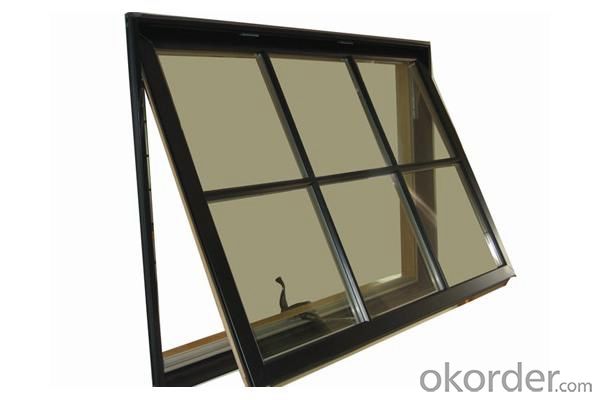
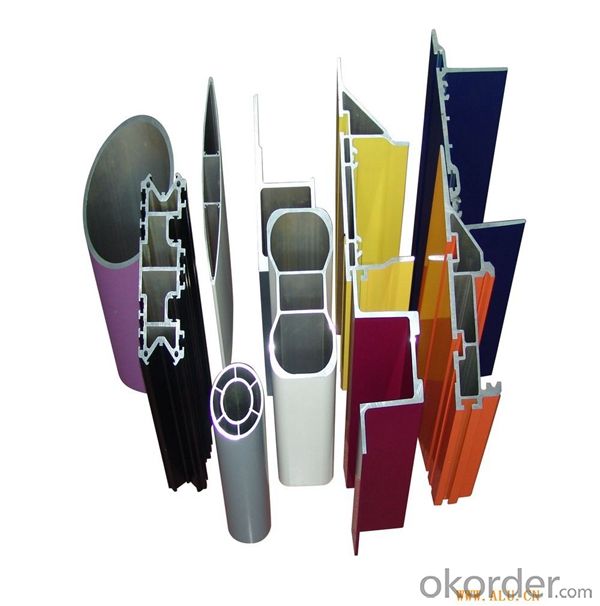
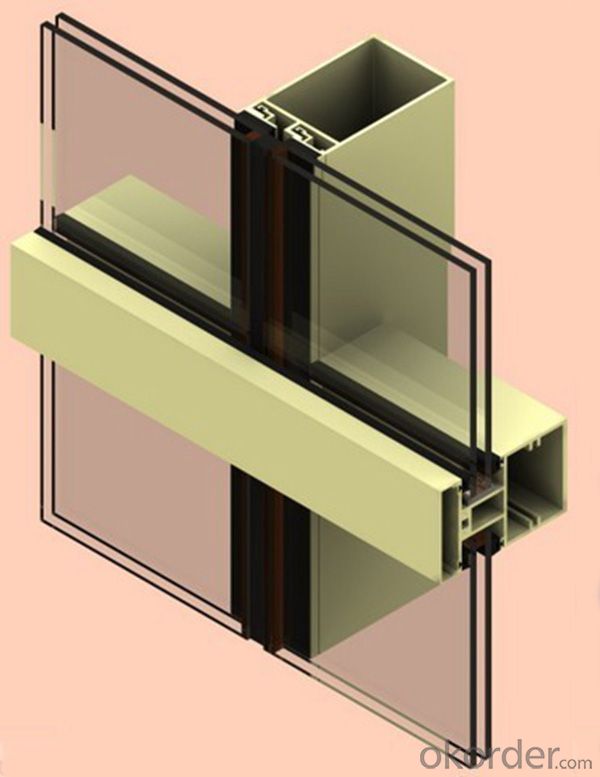
6. Package and shipping of Aluminum Profile Chinese Supplier Cheap 6063 T5 for Window
First, plastic cloth with drying agent inside; Second, Pearl Wool; Third, wooden cases with dry agent, fumigation wooden pallets, aluminum surface could cover blue PVC film
7. FAQ
Question 1: What is your MOQ?
We accept one ton per type for an order. But the detail we could negotiate.
Question 2: What is your normal terms of payment?
We always trade with you by T/T. But we also accept the L/C as you require.
Question 3: How many kinds of the surface treatment we can choose?
You could choose different color of powder coated. Anodized of black. matte silver, nature, champagne, bronze color. Mill finished. Wooden finished and printed.etc.
Question 4: Can you supply OEM services?
We offer OEM services for 17 years.
Question 5: How many days for opening the mould?
Normally about 10 days.According to the difficulty of your drawing.
Question 6: Can i choose the package what i want?
Yes, of course. We offer various kinds of package.e.g.PE foam. Shrink film. Wrapping paper.
But we would give you professional suggestion of package.
- Q: What is the aluminum section table?
- Aluminum frame is used to do the frame, console ah. Jing Teng aluminum professional undertake assembly line workbench ~!
- Q: Can aluminum profiles be used for lighting fixtures or systems?
- Yes, aluminum profiles can be used for lighting fixtures or systems. Aluminum is a lightweight and versatile material that is commonly used in the construction of lighting fixtures due to its durability, corrosion resistance, and heat dissipation properties. Aluminum profiles can be easily fabricated into various shapes and sizes, making them suitable for different lighting applications such as recessed lighting, track lighting, pendant lighting, and more. Additionally, aluminum profiles can be anodized or coated with different finishes to enhance their aesthetic appeal and protect them from environmental elements. Overall, the use of aluminum profiles in lighting fixtures or systems allows for efficient and effective lighting solutions while maintaining a sleek and modern design.
- Q: Can aluminum profiles be extruded into hollow profiles?
- Yes, like aluminum tubes. This is hollow
- Q: Can aluminum profiles be used in display shelving and racking systems?
- Yes, aluminum profiles can be used in display shelving and racking systems. Aluminum profiles offer various benefits such as lightweight, durability, and versatility, making them suitable for these applications. They can be easily customized, assembled, and adjusted to meet specific shelving and racking requirements. Additionally, aluminum profiles provide an aesthetically pleasing and modern look to the display shelving and racking systems.
- Q: This question asks for methods to ensure the reliable and durable installation of aluminum profiles.
- <p>To ensure the reliable and durable installation of aluminum profiles, follow these steps: Use high-quality aluminum materials that meet industry standards for strength and durability. Ensure proper alignment and level during installation to prevent warping or stress on the profiles. Use appropriate fasteners and adhesives recommended for aluminum to ensure a strong bond. Avoid over-tightening fasteners, which can cause deformation. Regularly inspect and maintain the profiles to check for signs of wear or damage, and address any issues promptly. This will help maintain the integrity and longevity of the aluminum profiles.</p>
- Q: Do aluminum profiles require regular maintenance?
- Maintenance is necessary for aluminum profiles. However, the frequency and extent of maintenance depends on how they are used and the environment they are in. Although aluminum profiles are known for being durable and resistant to corrosion, they can still become dirty, grimy, and oxidized over time. To keep them clean and looking good, it is recommended to regularly clean them with mild soap or detergent and water. It is also a good idea to lubricate any moving parts, like hinges or sliding mechanisms, to ensure they operate smoothly. Additionally, it is important to inspect the profiles for any signs of damage, such as cracks or loose connections, so that any issues can be addressed before they get worse. By doing regular maintenance, the lifespan of aluminum profiles can be extended and their performance can be optimized.
- Q: Are aluminum profiles suitable for use in roofing or wall systems?
- <p>Yes, aluminum profiles are commonly used for both roofing and wall systems due to their durability, corrosion resistance, and lightweight properties. They offer a modern aesthetic and can be easily integrated into various architectural designs. Aluminum profiles are also known for their strength and flexibility, allowing for the creation of complex shapes and structures. Additionally, they require minimal maintenance and can withstand harsh weather conditions, making them a popular choice for construction projects.</p>
- Q: What are the color options available for aluminum profiles?
- The color options available for aluminum profiles are vast and diverse. Standard options usually include silver, bronze, and black anodized finishes. However, these profiles can also be powder-coated in a wide range of colors, allowing for customization to match any aesthetic or design preference.
- Q: How to distinguish the good or bad of aluminum profile simply?
- Thus, they can earn a lot of profits, that is why some customers say that certain companies quoted lower prices than us.Third, the chemical composition is not qualified.Some manufacturers in order to retain customers, at the incorporation of a large number of miscellaneous scrap aluminum, aluminum can greatly reduce the cost, but will lead to industrial aluminum unqualified chemical compositions, seriously endanger the life of aluminum.Fourth, reduce the wall thickness of profiles.Some manufacturers will make aluminum profile wall thickness is insufficient, originally 1.5MM thick aluminum, they in order to save costs, only 1.2MM, in this way, an aluminum prices must be cheaper. But customers do not know, but also that a good supplier found, in fact, cheated, but also to help him count the money.
- Q: What are the load-bearing capacities of aluminum profiles?
- Several factors, including profile design, dimensions, material grade, and intended application, contribute to the varying load-bearing capacities of aluminum profiles. Due to their excellent strength-to-weight ratio, aluminum profiles find wide application across various industries. However, it is crucial to seek advice from the manufacturer or an engineer to obtain precise load-bearing capacity information. Typically, aluminum profiles are engineered to withstand different types of loads, namely static, dynamic, and impact loads. Static loads refer to constant weights or forces over time, while dynamic loads involve moving or changing forces. On the other hand, impact loads result from collisions or sudden changes in motion. Engineers determine the load-bearing capacity of an aluminum profile by considering its maximum allowable deflection, bending moment, shear force, and torsional stress before failure. These calculations involve the analysis of the profile's geometry, cross-sectional properties, and material properties. It is important to note that load-bearing capacities can be influenced by factors such as temperature, corrosion, surface treatment, and the presence of additional components or attachments. Therefore, it is essential to consider these factors and refer to the manufacturer's specifications or engineering guidelines for safe and reliable load-bearing capabilities. In conclusion, the load-bearing capacities of aluminum profiles are influenced by multiple factors and can vary significantly. To determine the specific load-bearing capacity for a particular aluminum profile in a given application, it is advisable to consult with manufacturers, engineers, or industry standards.
Send your message to us
Aluminum Profile Chinese Supplier Cheap 6063 T5 for Window
- Loading Port:
- Shanghai
- Payment Terms:
- TT OR LC
- Min Order Qty:
- 5 m.t.
- Supply Capability:
- 1000 m.t./month
OKorder Service Pledge
OKorder Financial Service
Similar products
Hot products
Hot Searches
Related keywords
